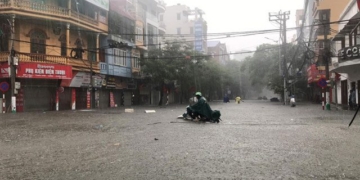The global warming situation could melt most of the ice covering the permafrost in the Arctic before the end of this century, according to a forecast by a research team from the U.S. Central Climate Research Institute led by climate scientist David Lawrence.
 As the ice melts, it will release a significant amount of carbon dioxide into the atmosphere, threatening ocean currents and causing flooding of roads and homes in Canada, Alaska, and Russia. Currently, permafrost covers about one-quarter of the land surface in the Arctic, with the upper layer believed to hold at least 30% of the Earth’s carbon.
As the ice melts, it will release a significant amount of carbon dioxide into the atmosphere, threatening ocean currents and causing flooding of roads and homes in Canada, Alaska, and Russia. Currently, permafrost covers about one-quarter of the land surface in the Arctic, with the upper layer believed to hold at least 30% of the Earth’s carbon.
Dr. Lawrence and colleagues used computer models to measure the interactions between the atmosphere, oceans, on-land ice, sea ice, and the melting of permafrost. Assuming that carbon dioxide and other greenhouse gases continue to be emitted from vehicles, power plants, and other sources, the scientists found that the region with approximately 3.5 meters of ice thickness on the Arctic surface would shrink from 4 million square miles (one mile = 1.6 kilometers) to just 1 million square miles by 2050.
By 2100, this area would be reduced to about 400,000 square miles, meaning these changes will occur within just one century. In August of this year, scientists studying in Siberia reported an unprecedented melting phenomenon at the world’s largest mudflat, which they fear is releasing billions of tons of methane, a greenhouse gas that is 20 times more potent than carbon dioxide.
Meanwhile, the U.S. Senate recently rejected a proposal to allow oil drilling in the largest oil reserve located beneath the Alaska Wildlife Refuge. The Republican Party had hoped this proposal would pass to incorporate the oil drilling plan in Alaska into the defense spending bill that allocates funds for U.S. military efforts in Iraq and disaster relief for Hurricane Katrina victims.
TH. TUNG



















































